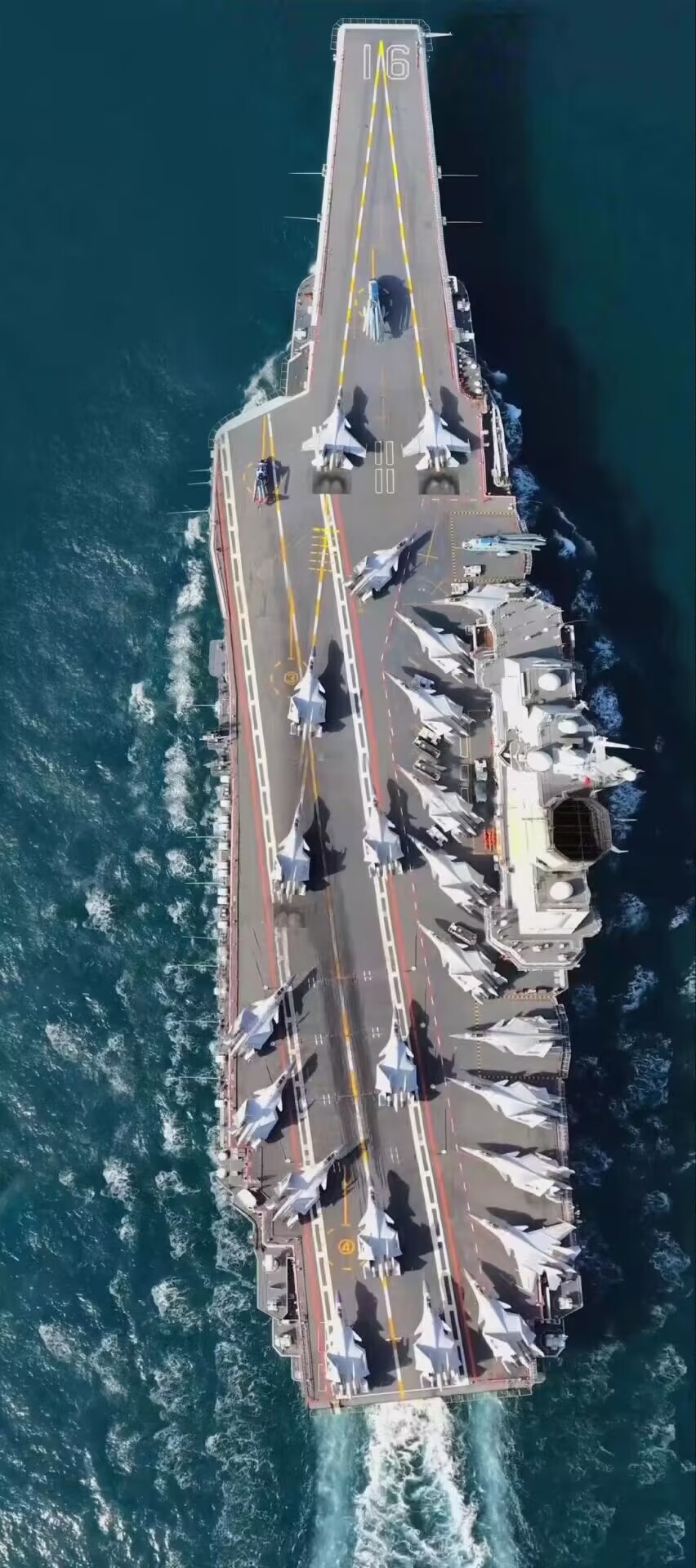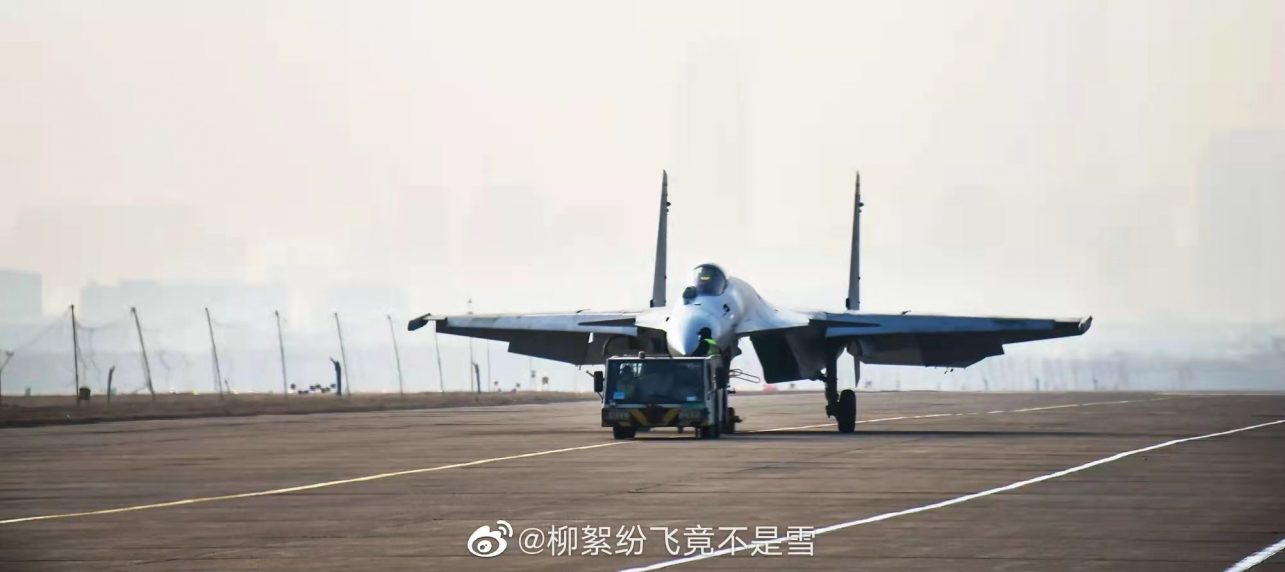China’s first aircraft carrier, Liaoning, celebrated its birthday by carrying in what appears to be a full load of 24 J-15 carrier-borne fighters on September 25 – the largest number of J-15 fighters ever publicly seen.
This ‘beast mode’ might indicate China is rapidly gaining proficiency in carrier operations and can soon undertake high Sortie Generation Rates (SGR).

Meanwhile, in a recent video released by China’s CCTV, J-15 fighter jets can be seen flying over a ‘foreign’ warship. Song Zhongping, a Chinese military expert, told the Global Times that this vessel appears to be an Arleigh Burke-class destroyer.
The US Navy operates the Arleigh Burke-class destroyer, while Japan and South Korea also have warships designed on the Arleigh Burke class.
It is not clear where the video of the J-15s flying over the US destroyer was taken, but experts suggested that the incident could have transpired in the Taiwan Strait.
What Does The Beast Mode Indicate?
Chinese social media were buzzing with reports that the carrier-borne fighters – J-15, undertook sorties “in rotation” in northern China and completed combat missions before returning to the carrier.
Seen on deck are also two Z-18 anti-submarine and early warning helicopters and one Z-19 search and rescue helicopter, taking the combined total of all aircraft parked on the Liaoning’s flight deck to 27.
‘Jesus Roman,’ a Chinese military said in a Twitter thread explaining the significance of the Liaoning’s sailing with a full load of aircraft.
“Although it is possible to release the carrier-based aircraft during wartime while lifting (other) aircraft from the hangar on elevators, it is not necessary for all the carrier-based aircraft to go to the deck (for sorties).
However, the full deck state of the Liaoning ship also has tactical significance. This full state can be divided into two waves of attack. The red line on the picture connects the first wave, 12 J-15s. Then starboard is the second wave, with 12 J-15s.”
Thus 24 J-15s can take off in two waves within one and a half hours, perform air interceptions of about 400 kilometers, or hit sea targets about 600 to 1,000 kilometers away, and then land back sequentially on the carrier.
Striking sea targets will also require two to four J-15s for air cover/integral air defense, accompanied by search and rescue helicopters and early warning helicopters.
Thus, the Liaoning can send the first wave of eight to ten J-15s, followed by the second wave of an equal number, with each attack wave launching 16-32 or 20-40 YJ-83 anti-ship cruise missiles.
They can be supported by two to four J-15s carrying buddy refueling pods which can also protect the attack wave before returning and landing.
“If the tactics are reasonable, the Liaoning’s two waves can launch between 32 to 80 YJ-83s, which can (sink) five to six enemy ships,” Roman said.
The deck of the Liaoning carrier CV-16 is full of J-15 fighter jets pic.twitter.com/BIXysjo9v6
— 彩云香江 (@louischeung_hk) September 25, 2022
A retired Indian Naval aviator said that the maximum sorties of carrier-borne fighters are not always matched by the deck crew being able to quickly ‘recover’ landing aircraft and park them in time.
“Thus, it is likely that all 24 fighters cannot be launched in a short period of time during actual operations. It would become too risky when all these aircraft need to land back on the ship and if the planes that have landed before them still occupy the flight deck and have not been recovered and parked,” the officer added.
The Liaoning was launched ten years ago on September 25, 2012, making it the People’s Liberation Army Navy’s (PLAN) first aircraft carrier. Initially, the Liaoning carried only one or two fighters, later increased to 5, 8, 13, and now 24, which is the maximum number of J-15 fighters, according to another post on Chinese social media.

The Backbone of Chinese Combat Naval Aviation
The J-15 is a Chinese reverse-engineered and heavily tweaked version of the Russian Sukhoi Su-33 carrier-borne fighter, meant to be the mainstay of China’s carrier naval aviation even after the FC-31/J-35 joined the service.
The Generation 5 stealth J-35 is expected to operate from the under-construction Type 004 carrier and ruled out from full operations from the Type 003 Fujian that was launched recently.
The J-15 Fei Sha (Flying Shark) was also seen with different landing gear, making it the J-15T, capable of being launched from the Catapult Assisted Take-Off But Arrested Recovery (CATOBAR) system on the Fujian carrier.
With the J-20 never planned to be adopted for carrier operations and the J-35 still under development, the J-15B – operating from the Liaoning and Shandong carriers – and the J-15T will remain the backbone of the PLAN’s combat naval aviation, air superiority, and multi-role fighter fleet.
- The author can be reached at satamp@gmail.com
- Follow EurAsian Times on Google News




